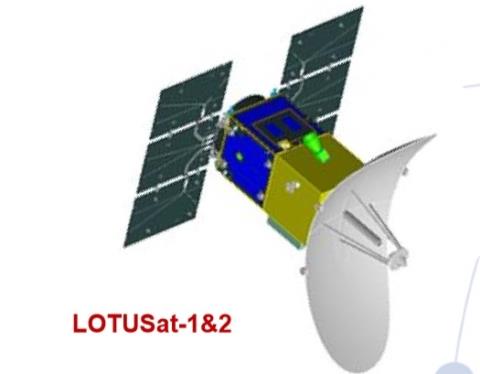
LOTUSat-1 and LOTUSat-2 are important components of the national satellite center project, Vietnam's biggest science & technology project with total investment capital of $600 million.
LOTUSat-1 and LOTUSat-2 weigh 600 kilos each and the life expectancy in orbit is five years.
|
In early 2019, Vietnam will launch LOTUSat-1, a satellite with radar technology that will observe the Earth. Three years later, it will launch LOTUSat-2. |
After being launched into space, the satellites will be responsible for management of natural resources and environment. They will give early warnings about natural calamities, climate change and track the movement of fish, thus serving offshore fishing activities and national security.
With radar technology, the two satellites will be able to take pictures in all weather conditions with high resolution, according to Pham Anh Tuan, director of the National Satellite Center.
LOTUSat-1 will be manufactured by Japanese with the participation of engineers from Vietnam. As for LOTUSat-2, the design and manufacturing will be implemented in Vietnam by Vietnamese engineers.
This will be a milestone in Vietnam’s capability in mastering space technology.
Experts from JICA (Japan International Cooperation Agency) said the two satellites will give data that will improve the efficiency of agricultural production, allowing Vietnam to save $150 million thanks to reduction of damages caused by natural calamities.
Meanwhile, the total amount of money Vietnam needs to spend on making the satellites, training staff and running land operation stations is about $600 million for the 8-year operation of the satellites.
Vietnam also plans to launch two other satellites – NanoDragon and MicroDragon – in 2018.
A report showed that Vietnam incurs damages worth 1.5-2 percent of GDP caused by natural calamities, or $3 billion.
To receive images from LOTUSat-1, a receiver station in the Hoa Lac Hi-tech Zone and a station in HCMC are being built.
Vietnam has also been implementing a plan to train staff for the space industry with the training of engineers and master's degree candidates at the three largest universities – the Hanoi University of Technology, the Hanoi National University and HCMC National University.
Vietnam will also send 35 officers to Japan for a master’s degree in universe technology. The engineers will design, manufacture and test MicroDragon satellites under the guidance of Japanese professors.
The 50 x 50 x 50 cm satellites weigh 50 kilos and will be in charge of observing the coastal areas to assess water quality and locate aquatic resources to serve the development of Vietnam’s aquaculture.
| related news |
Kim Chi